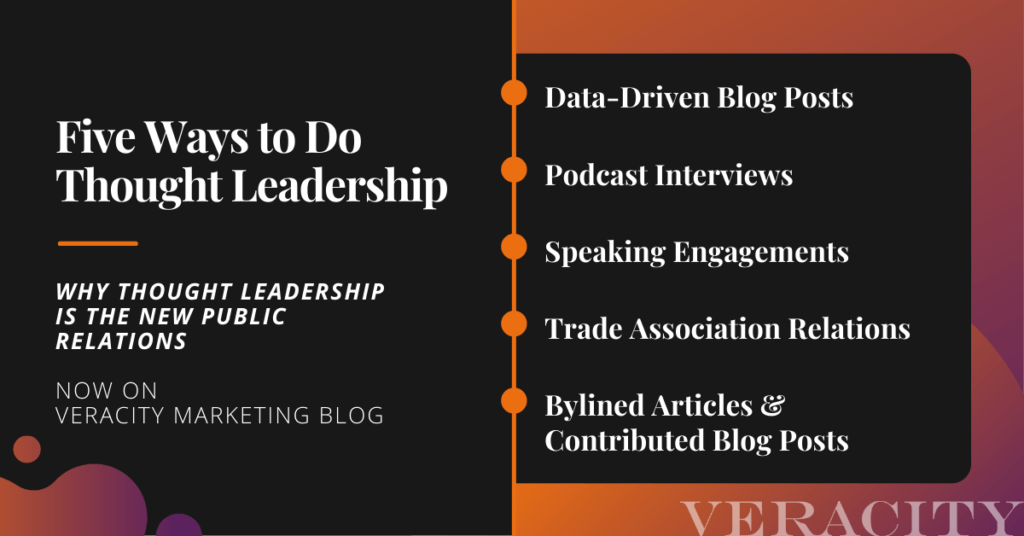Once upon a time, television (TV) and print media enjoyed almost universal trust among American citizens. During the 1960s and 1970s, people often referred to CBS Evening News anchor Walter Cronkite as “the most trusted man in America.” With this built-in credibility, journalists had the power to end wars, topple administrations and uncover even the most closely guarded secrets of venerated institutions. Oh, how things have changed.
Today, we throw the term “fake news” around freely as it underscores a growing cultural divide over what information is factual and what is manufactured. Evidence of this distrust shows up in market research. For example, the Reuters Institute for the Study of Journalism found that the United States ranked last out of 46 countries in digital news trust at just 29%.
How “Fake News” Impacts Public Relations
While trust in traditional news sources has never been lower, the public’s view of business is much different. According to the Edelman Trust Barometer, business enjoys a 61% trust level globally, compared to 57% for non-governmental organizations, 53% for government, and 51% for media (ouch!). The same report found that more than half of people believe that businesses must fill the information void when the news media is absent. This new playing field creates some fantastic opportunities for public relations (PR) professionals.
In the old days, PRs attempted to co-opt traditional media’s reach and credibility by convincing outlets to share their brand messages. But today, in an environment where the media trust is lower than ever, taking that same approach might sacrifice some of the credibility your business already has. Ironically, the same environment that led to such a steep decline in media trust enables PRs to use their skills in different ways to achieve better results. That’s where thought leadership comes in.
What is Thought Leadership?
Thought leadership often gets confused with personal branding, which makes some business leaders hesitant to pursue this strategy. However, thought leadership looks different than what you might expect. When done well, it’s an outreach strategy that shares brand messages in helpful or informative ways. Good thought leadership is quiet and introspective rather than brash or braggadocious, which is what gives it so much weight and credibility.
A way to look at this is by calling it: knowledge-driven thought leadership. Marketers can collect experience or knowledge through interviewing stakeholders, research and data compilation; and then market that compiled knowledge through thought leadership.
Sharing thought leadership positions your company as an expert in its field, raises the profile of the business and its leadership and can positively influence your company’s search engine optimization (SEO) position. All these benefits inevitably lead to more leads, increased sales and growing revenue.
Five Ways to Do Thought Leadership
Once you’ve decided to take the leap into thought leadership, there are many different avenues you can pursue. The form your thought leadership takes will often be determined by the goals, resources and opportunities your company faces.

1. Data-Driven Blog Posts
The number one way to drive SEO with PR is by publishing data-rich blog posts on your company’s website. Everyone (especially the press) loves data, so this type of thought leadership offers lots of external value. Post topics can cover any of the three categories I mentioned above and must include references. As part of the process, create visuals to accompany the post (like an infographic) representing the data you’re writing about, along with shareable blurbs you use to promote the post on social media.
After the post goes live under your leader’s name, write a short email pitch with the link that is no longer than five sentences asking for these three things:
- Take any part of this blog post verbatim to quote our client in any story relevant to this topic.
- Get a fresh take on this topic by interviewing our executive (the “author” of the blog post) for more information.
- Link to this blog post as a reference in any story you may be working on surrounding this topic.
It’s possible you don’t have data you can share. If that’s the case, here are two other ways to do thought leadership blog pitching:
- Trends and predictions: Create content around what you or your leader think may happen in an industry, geographic or market category. For example, “How COVID Variants Will Affect Fall Travel.” These posts can reference what other leaders in the space predict.
- Publishing Your Leader’s Opinion: This is (understandably) the scariest realm of thought leadership and potentially the most valuable. After all, opinions transform us into thought leaders, and the public is hungry for and expecting opinions. In fact, 86% of the Edelman respondents believe CEOs must lead on societal issues. Here’s the good news: your leader’s views don’t need to be controversial. However, opinions that go against the grain are great.

2. Podcast Interviews
Another great way to generate positive SEO returns is for your leader to appear in podcast interviews. That’s because interviews uploaded to websites almost always guarantee a link. Currently, there are approximately a million trillion podcasts out there, so you need to be selective. In my book, A Modern Guide to Public Relations, there’s an entire section on finding, vetting, and organizing podcast resources for SEO. Podcasts can also be an excellent way for your leaders to practice and build confidence for other types of thought leadership.
3. Speaking Engagements
Speaking engagements put your leader on stage, sharing their expertise in front of industry colleagues. These opportunities will naturally boost your leader’s profile and bring more exposure to their business. But speaking engagements can also do so much more. The organizations that put on these events (like trade associations) typically have quality domain authorities (DA). When they include links to their speaker’s websites in their marketing and promotion materials, you’ll enjoy a nice SEO boost. These events are also an excellent opportunity to build owned content (like blog posts and podcast interviews) around your leader’s appearance.
4. Trade Association Relations
By building mutually beneficial relationships within relevant trade associations, you may uncover thought leadership opportunities like speaking engagements or contributed blog posts. These relationships can also bring other benefits like social media and newsletter promotion within the association and even new business opportunities. An excellent place to start is creating a relationship with the group’s marketing chair that’s not just based on you asking them for opportunities.
5. Bylined Articles & Contributed Blog Posts
Bylined articles and contributed blog posts happen when the media runs an article written by your thought leader with their name and company name in the “byline.” There are two ways to pitch this kind of content:
- Create a synopsis of the article and ask if the media outlet is interested.
- Write the entire piece and ask if the media outlet wants to run the article.
While option one is undoubtedly more efficient, many media outlets won’t accept a piece based just on a synopsis.
I suggest sending pitches to your top five targets at the same time in separate, direct emails. If more than one outlet says yes, tell the sites with the lower DA that the piece was accepted somewhere else, then offer to create another customized piece “just for them.”
If you don’t hear back from a target, follow up in two days by telling them you’ll be moving to other outlets in another two days. When that date arrives, move on to the next group of targets. Repeat this cycle until you’ve landed your placement.
Three Tips for Sharing Your Thought Leadership
Of course, your thought leadership will only pay dividends when people see it. With that in mind, here are three tips for sharing your work with the media.
1. Build Your List First
Before you start creating thought leadership and writing your pitches, begin by building your target list. This step will organize your thoughts, bring more organization to your efforts and potentially shift your ideas.
For data-driven blog posts and contributed articles, traditional media may not always be the best target. So don’t forget to include associations, podcasts and B2B trade and vertical publications in our list as well.
2. Use the Internet.
Google can be a powerful tool for building your target list. Start by using specific language in your search by including keywords like publications, outlets or magazines. Once you’ve added potential outlets to your list, start digging into their websites to find a roster of editorial contacts. When you pitch these contacts, make sure to CC the editor, managing editor and/or digital editor. You can also pitch those contacts directly if you can’t find a journalist covering your subject matter.
3. Domain Authority Should be a Guide
Make sure your target is worthwhile by researching its DA ahead of time. We typically don’t pitch anything under a 50 DA. However, there’s leeway with deep targets if it’s important to your client’s revenue. Consumer and business consumer publications have higher DAs, but they’re also harder to get into. Focusing on publications in the business journal network with a local business angle might be most effective.
We’re Always Evolving
PR work has been evolving since the moment it was invented. So, our current moment is another opportunity to refine our practices and serve our clients in better ways. Thought leadership accomplishes this by harnessing the built-in trust businesses have earned and sharing it using the methods PRs have employed for decades.
These efforts result in a mutually beneficial scenario for the people who create, share and consume the content. When you include the additional SEO benefits, it’s clear why thought leadership has become a more valuable strategy than pitching traditional media coverage. Who knows what’s around the corner, but for now, thought leadership is PR, and I’m all in.









